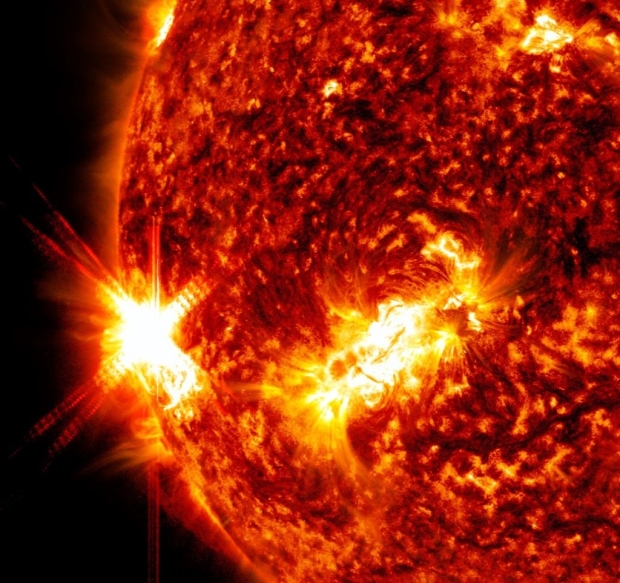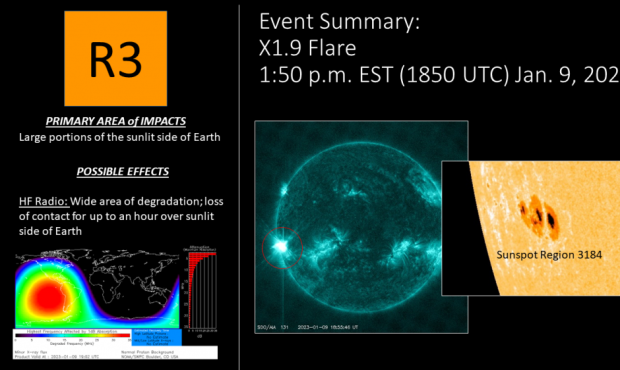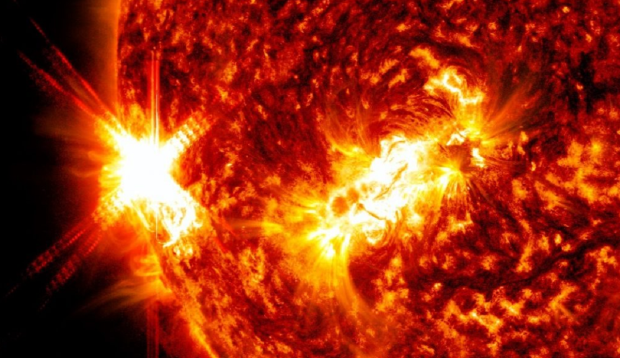NASA's instruments have detected a strong solar flare erupting from an extremely active sunspot region, according to a recent NASA blog post.

The space agency took to its website to announce that its Solar Dynamics Observatory detected the strong solar flare being emitted on January 9 at 1:50 pm EST, and that the event was photographed as displayed by the above image. The flare was classified as an X1.9 flare, with 'X' representing the most intense categorization of a solar flare, followed by M, C, B, and A. The difference between each of the letters is a 10-fold increase in energy output. So an X is ten times an M and 100 times a C.
Solar flares are intense eruptions of energy that are released by the Sun after there is a massive build-up of magnetic energy that has accumulated in the solar atmosphere. Solar flares are also typically associated with sunspot regions, which are regions producing strong magnetic activity. These flares, along with other forms of solar activity, such as coronal mass ejections (CME), have the potential to disrupt various types of communication systems on Earth, depending on the severity of the event.
Several systems across the globe can become impacted, including radio transmissions, satellite-based navigation signals such as GPS, and even electric power grids. Furthermore, solar flares can also pose a risk to spacecraft and astronauts in space, as the increased radiation and energetic particles can damage or impair equipment and potentially threaten the health of humans inside the any spacecraft.

According to the Space Weather Prediction Center's definition, a coronal mass ejection (CME) is a phenomenon in which a large amount of solar material and magnetic fields are suddenly expelled from the Sun's corona, the outer atmosphere of the star. This material is shot out into space in a specific direction, covering large swaths of space. The material is released from the Sun at extremely high speeds and can have a significant impact on the near-Earth environment, especially if Earth is caught right in the middle of it. Furthermore, CMEs are typically, but not always, tied to a solar flare.
"Spot complex Region 3184 produced an impulsive X1.9 flare (R3-Strong HF Radio Blackout) at 1:50pm EST (1850 UTC) on 9 January, 2023. This region was also the likely source of an X1.2 (R3) flare on 5 January from the southeast solar limb; and since rotating onto the visible solar disk, this region has also been the source of occasional M-class (R1; Minor) solar flares. Impulsive flares that reach the R3 levels can result in short-term HF radio frequency blackouts centered at the subsolar point during flare maximum. Continue visiting our SWPC webpage for the latest information and updates," wrote the Space Weather Prediction Center in an update published January 9.


